Input Lag and Response Times
We've heard frequent complaints about input lag on various LCDs, particularly after our last review of the Samsung 245T. We decided it was time to take a closer look at the subject and see if we could come up with a repeatable test. We ended up settling on a test similar to what we were using to show response times, with a few changes.
We run the Wings of Fury benchmark in 3DMark03, with the resolution set to the native LCDs resolution -- in this case 1920x1200. Our test system is an overclocked quad-core Q6600 (3.30 GHz) running two Radeon HD 3870 cards in CrossFire on a Gigabyte GA-X38-DQ6 motherboard. (This is the same system used in our initial testing of 3DMark vantage.) We connect the test LCD and a reference LCD to two outputs from the Radeon 3870 and set the monitors to run in clone mode.
The reference Monitor is an HP LP3065, which we have found to be one of the best LCDs we currently possess in terms of not having input lag. (The lack of a built-in scaler probably has something to do with this.) [Ed: Before you ask, no, I do not have any CRTs around that I can use as a reference monitor, and frankly I don't want any. They're huge, heavy, and require more power, and the best ones were made over five years ago. Sorry - LCDs are where everything is heading. R.I.P. CRT.]
While the benchmark is looping, we snap a bunch of pictures of the two LCDs sitting side-by-side. We set our camera to f/2.2, ISO-400, and a 1/400 sec exposure in order to get a clear snapshot of the on screen action. (Note that these settings have changed from previous articles.) 3DMark03 lists a runtime with a resolution of 10 ms at the bottom of the display, and we can use this to estimate whether a particular LCD has more or less input lag in our reference LCD. We then sort through the images and discard any where the times shown on the LCDs are not clearly legible, until we are left with 10 images for each test LCD. We record the difference in time relative to the HP LP3065 and average the 10 results to come up with an estimated input lag value.
It's important to note that this is merely an estimate -- whatever the reference Monitor happens to be, there are some inherent limitations. For one, LCDs only refresh their display 60 times per second, so any measurement less than approximately 17 ms is not 100% accurate. Second, the two LCDs can have mismatched vertical synchronization, so it's entirely possible to end up with a one frame difference on the time readout purely because of this. That's why we average the results of 10 images, and we are confident that our test procedure can at least show when there is a consistent input lag/internal processing delay.
Here is a summary of our results, followed by a sample image chosen to highlight the pixel response time of the LCDs. Despite what the manufacturers might advertise as their average response time, we found most of the LCDs were equal in this area -- they all show roughly a one frame "lag", which equates to a response time of around 16 ms.
| Display Input/Processing Lag vs. HP LP3065 | |||||||||||
| One | Two | Three | Four | Five | Six | Seven | Eight | Nine | Ten | Average (ms) | |
| ASUS MK241H | 10 | 0 | 0 | 0 | 0 | 0 | 0 | 0 | 0 | 0 | 1 |
| Dell 2407WFP | 10 | 20 | 30 | 20 | 10 | 10 | 30 | 30 | 10 | 20 | 19 |
| Dell 2408WFP | 30 | 40 | 40 | 40 | 30 | 30 | 40 | 30 | 50 | 50 | 38 |
| Gateway FHD2400 | -10 | -10 | 0 | 10 | 10 | 10 | 0 | 10 | 10 | 0 | 3 |
| Gateway FPD2485W | 30 | 10 | 20 | 20 | 20 | 10 | 0 | 30 | 20 | 20 | 18 |
| HP w2408 | 10 | 10 | 0 | 0 | 0 | 0 | 0 | 10 | 0 | 0 | 3 |
| LaCie 324 | 40 | 30 | 40 | 30 | 40 | 50 | 40 | 50 | 50 | 30 | 40 |
| Samsung 245T | 30 | 30 | 30 | 30 | 30 | 20 | 30 | 30 | 20 | 20 | 27 |
| Samsung 2493HM | 0 | 10 | 0 | 0 | 0 | 10 | 0 | -10 | 0 | 10 | 2 |
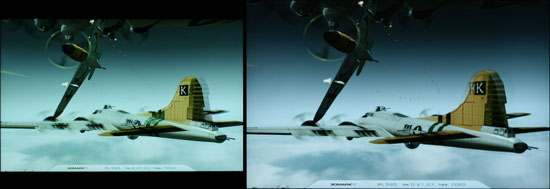 ASUS MK241H |
 Dell 2407WFP |
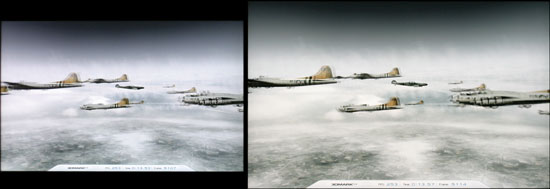 Dell 2408WFP |
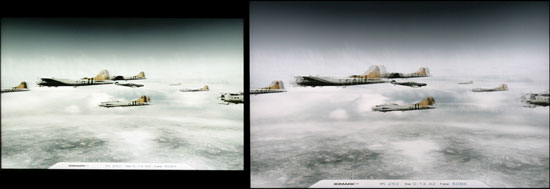 Gateway FHD2400 |
 Gateway FPD2485W |
 HP w2408 |
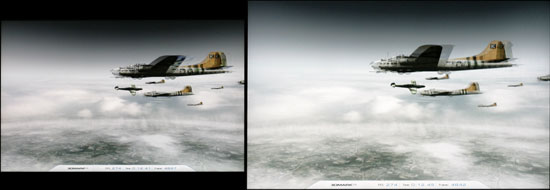 LaCie 324 |
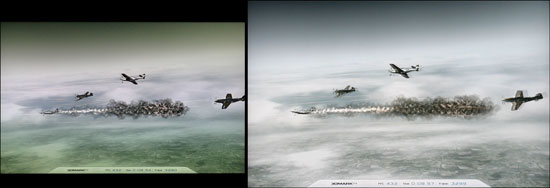 Samsung 245T |
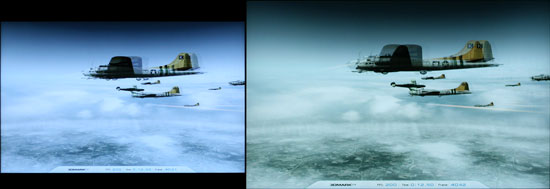 Samsung 2493HM |
The table tells a clear story: all of the S-PVA panels as we mentioned clearly have more input lag/internal processing lag than all of the TN panels. This is a pretty shocking result, as it indicates that the problem may actually be inherent in S-PVA technology, although there are still panels that do better in this area. The Gateway FPD2485W and Dell 2407WFP both have an input lag just under 20 ms -- or a one frame delay on average. The Samsung 245T has a 27 ms delay on average, indicating it would be one or two frames behind what is actually happening. Worst of all are the Dell 2408WFP in the LaCie 324, which have a two or three frame lag. (This is discounting any other lag that is present between the user and what they are seeing on the display; there's also a slight amount of lag associated with reading input from your mouse/keyboard, processing that input, rendering the resulting image, and sending that to your display.) In contrast, the four 24" TN panel LCDs all more or less match the HP LP3065.
Thus, we have no choice but to conclude that if you are seriously concerned about input lag, you will have to sacrifice viewing angles, color accuracy, and/or overall display quality in order to avoid this on the current 24" offerings. On the other hand, we have played games on all of the test LCDs, and we honestly can't say that we noticed any difference in our overall performance. But we weren't hopped up on Bawls and we don't have a 1337 name like Fatal1ty. Competitive gamers will probably feel differently.










89 Comments
View All Comments
JarredWalton - Tuesday, May 6, 2008 - link
But that's exactly what I did in this review. Unless you mean a high-speed video camera that can record the changes in response to external stimuli (i.e. someone clicking a mouse).I think way too many people are losing sight of the forest because they're obsessing over the trees. I've given relative input lag, and it's accurate to 10ms for sure (and with averaging it should be accurate to around 3ms). At some point I may find an LCD that has a negative lag relative to the HP LP3065, and that's fine. As it stands, the best LCDs equal that LCD's lag.
Input lag as a whole is only one consideration of a display purchase, and differences of 3ms (or even 10ms) are not going to make you suddenly superior in games. 50ms? Sure, that's a potential problem, but anyone who has played online FPS games competitively knows that you have to learn to anticipate in order to compensate for network lag that may be anywhere from 50 to 150ms even with a high-speed connection.
If you want a display that offers minimal processing lag, so far the TN panels and 30" LCDs do great. I'd assume all the 22" LCDs do reasonably well, but having none in house at present I can't say for sure. Then everyone with S-PVA panels can call you an LPB.
jmunjr - Friday, May 2, 2008 - link
Though there are reports it now uses a TN panel, I am disappointed the Soyo Topaz S was not in this review. A bare bones S-PVA monitor for as low as $250 and easily $300 with no rebates? Ring me up! I have one and for the price it cannot be beat - period. At 24" TN monitors have too many shortcomings.bupkus - Friday, May 2, 2008 - link
I read this article this morning and then my gf calls me an tells me she has a $100 Dell credit that expires tonight.I thought, why not sell my Samsung SyncMaster 225BW and get this UltraSharp 2408? Starting Price... $679.00, that's why.
However, the E248WFP is on sale for $379.00. How does that compare?
Dashel - Friday, May 2, 2008 - link
Count me among those who want to know if it's even possible a revision will address the input lag on the Dell 2408. That's all that is holding me back from buying this monitor.Can they even get it down to 2407 input lag levels?
Finally BenQ G2400W, see if they wont give you one to review! That's my back up plan if the Dell doesnt pan out ;)
JarredWalton - Friday, May 2, 2008 - link
The best S-PVA panel has a 20ms lag on average. Note also that the Gateway FPD2485W uses a Faroudja chip and ends up with 20ms while the TN FHD2400 uses a Faroudja and gets ~0ms and LaCie does the same and gets 40ms. My guess is that somehow in the interest of colors or something else the S-PVA tech is delaying what you see on the LCD. The built-in scalers may also be inducing some delay, but the TN panels have scalers as well and don't suffer from any lag.Dashel - Saturday, May 3, 2008 - link
Isnt the 2407 an S-PVA as well though? You'd think they'd be able to at least match that level of input lag. That'd be enough to make me confident enough to buy one.As it stands, I'll have to see what revision A01 brings. I'll probably get one anyway. No 24" seems to have everything I want sadly. Good gaming non TN panel with plenty of inputs. The 2408 or that DoubleSight seems to come closest.
GTVic - Friday, May 2, 2008 - link
I would like to know if it is possible for game developers or hw manufacturers to develop controls in the games or in the driver control panel that would allow an adjustment for input lag. That way if you know you have a certain lag you can tell the game/driver to compensate.PPalmgren - Friday, May 2, 2008 - link
I highly doubt this would be possible.When I first hooked up my NEC 2470WNX, I played some DotA in (a Warcraft 3 map) and noticed after 5 minutes that I couldn't click on anything as well as usual. The funny thing is this isn't really aim-intensive, being an FPS. I tested it out and realized my mouse's response was delayed on the screen. I then noticed the same problem playing BF2 and NS a day later. It becomes impossible to aim quickly because you aim based on where your cursor is visible. However, your cursor is not where you see it on the screen, its still moving. Its a constant fight of over-compensation ruins your gameplay. The next week, I put my old Viewsonic 19' back up and still use it for games. I STRONGY suggest buying a TN panel for games, having experienced the short end of the stick.
GTVic - Friday, May 2, 2008 - link
I think it certainly should be possible.There a maybe a few types of lag. One is due to an overloaded graphics card that is not able to draw enough frames per second to properly update your mouse position so you don't know what you are shooting at. There is nothing to be done about that except buy a better graphics card or reduce the resolution/quality.
The other type of lag is when the game thinks one frame is being displayed and due to delays down the chain an older frame is being displayed. The game records your mouse click (gun fire) and calculates whether you hit the target based on the wrong frame.
The lag is not enough to cause the audio to be out of sync but if the game knew that the display was constantly 3 frames behind then it should be possible to correct the problem. Would be nice if Jared could investigate that with ATI/nVidia/game devs.
Dainas - Friday, May 2, 2008 - link
Oh you don't have to go to TN, I have two 24" P-MVAs that suffer from none of the blatant lag in the aforementioned panels. Both are verifiably faster than the 20ms 2407wfp and coming from a CRT I had none of the loose feeling in fast FPS like CS:Source and CoD4. All these slow panels are more in the realm of 40ms.need only look at this to know TNs do not have an unavoidable technical advantage over VA panels and its likely the manufactures putting IQ over response in most cases ;
http://www.digitalversus.com/article-357-3215-303....">http://www.digitalversus.com/article-357-3215-303....
But then again considering these panels are dissapearing from the market one might have to go TN afterall for gaming.